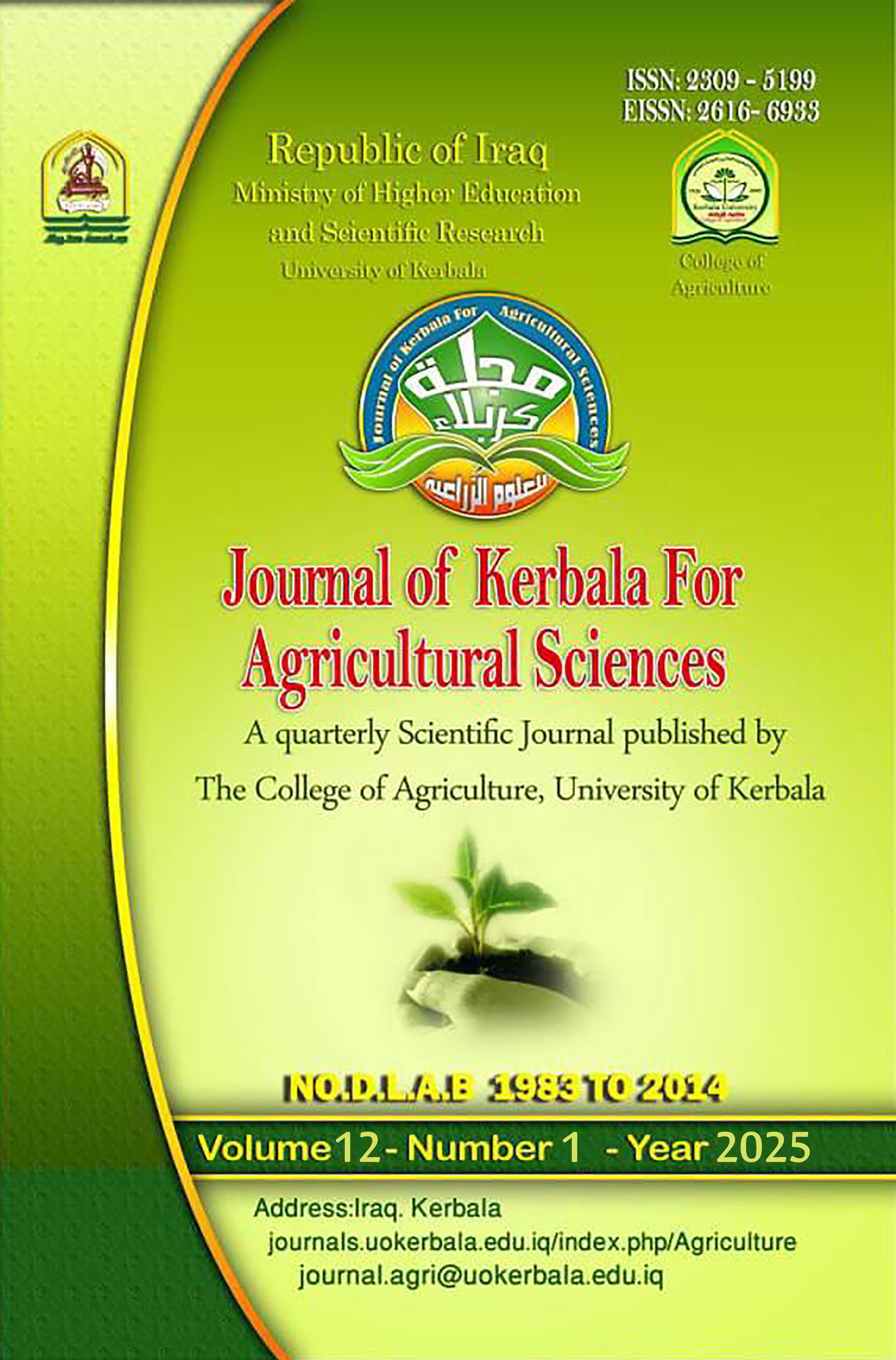Impact of seed soak by ascorbic acid and foliar spray with boron in some morphological and physiological traits of wheat
DOI:
https://doi.org/10.59658/jkas.v12i1.2623Keywords:
seed priming, ascorbic acid, boron, wheat plant, foliar spray, Total chlorophyllAbstract
This study included the investigation of the effect of wheat seeds (Abu Ghraib variety) priming at different concentrations of ascorbic acid and boron foliar nutrition on certain morphological and physiological characteristics of wheat plants. A field experiment executed in the city of Ramadi, Al-Jazeera region. The experiment included two factors: seed priming by ascorbic acid (vitamin C) at different concentrations (0, 10, 20, and 40 mg.l-1), represented by (P0, P1, P2, P3) and three concentrations of boron foliar spray at (0, 3, 5) mg.l-1 represented by (B0, B1, B2 ) were added to plants as Boric acid (H3BO3). The experiment was carried out according to the randomized complete block design (RCBD) with three replicates. The results showed that all ascorbic acid concentrations, boron foliar fertilization, and their interactions increased significantly with concentrations increasing in all studied characteristics. The highest significant differences were recorded at the concentrations of 40 mg.l-1 of ascorbic acid and 5 mg.l-1 of boron. (102.667cm ;14.000 branches. Plant-1; 68.55 cm2 and 5.227 mg.gm-1) for plant height, number of branches, leaf area, and total chlorophyll.
Downloads
Published
How to Cite
Issue
Section
License
Copyright (c) 2025 Copyright (c) 2024 is the Author's article. Published by the Journal of Kerbala for Agricultural Sciences under a CC BY 4.0 license

This work is licensed under a Creative Commons Attribution 4.0 International License.
Licensing Terms
All articles are published under a Creative Commons License and will be directed to the Creative Commons Attribution 4.0 International License (CC BY 4.0) That permits use, distribution, and reproduction in any medium, provided the original work is properly cited. This license also allows the work to be used for commercial purposes.
Use by both non-commercial and commercial users
This content is licensed under a Creative Commons Attribution 4.0 International (CC BY 4.0) license, permitting use by both non-commercial and commercial users. Individual users may access, download, copy, display, and redistribute the articles to colleagues, as well as adapt, translate, and text- and data-mine the content, subject to the following conditions:
- The author's moral rights, including the right of attribution and the right to protect their work from derogatory treatment, are respected.
- Where content in the article is identified as belonging to a third party, users must ensure that any reuse complies with the copyright policies of the owner of that content.
- If the article content is reused for research or educational purposes, users should maintain a link to the appropriate bibliographic citation, including the DOI and a link to the published version on the journal's website.






